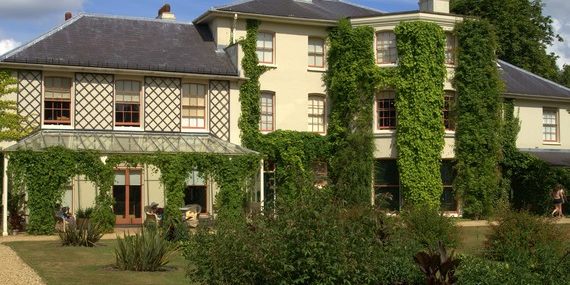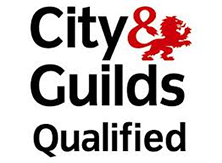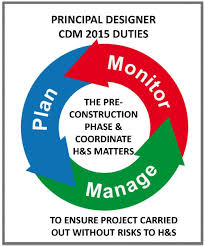When you hear about Charles Darwin the first place that comes to mind is probably the Galapagos Islands. This is where he worked on his theory of natural selection while observing what are now the famous Darwin finches. But what does Darwin have to do with architecture in Bromley? Down House, on the edge of Bromley, is where he began to develop this theory in the first place, after moving his family here in 1851 to escape the pollution in London.
Living in Bromley brings with it a wide variety of options in terms of architectural styles. Down House may have been built in the 1600s, but the extensions added in the 1800s give it a distinctly Victorian feel. Look around and you will also find a lot of 1930s’ retro style homes as well as a smattering of Georgian and Edwardian architecture. If you are looking for inspiration for a new home in the borough, want to add some space, or make changes to the internal layout of your home, there is plenty to choose from in Bromley.
We take a look at the main architectural styles found in Bromley to help inspire you and get your creativity going.
Victorian architecture in Bromley
Defined as a structure built between 1837 and 1901, Victorian design ushered in a new era across the capital. With a retrospective feel but with new methods of construction, it is more classical in style, albeit less grandiose than the Georgian architecture that preceded it.
The railways that began to criss-cross the country during this time enabled new materials to be brought in from further afield. Iron frames, plate glass, polished granite, and terracotta began to appear on buildings. In fact, architecture as a profession was established during the Victorian era as architects began to use this diversity of materials to try new and different designs.
It was the time of the Industrial Revolution, and the pressing need for homes as people moved into the cities led to buildings beginning to be more mass produced. They sprang up quickly as terraced or semi-detached houses.
The downside to this quick and fast design and construction was a loss in grandeur compared to the Georgian era homes, particularly as they were now seen as homes for all, not just the wealthy.
Sash windows and brick remained, but the bricks were more colourful. Windows became larger as ceilings were higher, but the layout was more restricted with the footprint being longer and thinner.
Bay windows came into fashion – one of the period features many still look for in a Victorian home even today.
Down House is a Grade I listed building. The house and its gardens now belong to English Heritage and they have been restored and are now open to the public.
Did you know?
The original Crystal Palace was built in 1851 as part of the Great Exhibition of London. A remarkable Victorian structure featuring cast-iron and plate glass with fountains, gardens and trees inside, it was moved to Sydenham, in the London Borough of Bromley, after the exhibition. It was destroyed by a fire in 1936, the origins of which have never been established.
Art Deco architecture in Bromley
Art Deco architecture is defined by three things: curves, long lines, and angular columns. Whichever way you look at it, it evokes feelings of luxury with a touch of the magnificent. Lavish Art Deco architecture was most often seen on theatres, cinemas and music halls, while the more low-key style of curves and clean lines was seen on office and commercial buildings. The Odeon in Beckenham retains the Art Deco façade that defined what was then the Regal Cinema when it was originally built.
When it comes to homes the 1930s saw yet another facet of this architectural style – retro. Grandeur gave way to practicality and semi-detached new homes, many comprising flats and apartments, began to rise up across the borough. The expansion out of central London saw homes being built quickly using materials such as pebbledash which were cheap and abundant.
Council homes appeared but so did plenty of private homes as people began to invest their money into property during the Depression. Bay windows were one of the key distinguishing features between them and were frequently found on private homes.
Many were destroyed in the Blitz, leaving only a few remaining examples around London.
Did you know?
Bromley’s Market Square was moved to its present site in 1933. Mock-Tudor and retro architecture, both of which were hugely popular at this time, can be seen across the square to this day.
Georgian architecture in Bromley
Perhaps one of the most noticeable architectural styles, Georgian buildings are distinguishable due to their large windows with numerous small glass panes, their exposed brickwork on the upper storeys and the lack of private gardens. Nevertheless, they remain one of the most elegant architectural styles seen around Bromley.
Find out more about Georgian architecture and why people bricked up their windows.
Edwardian architecture in Bromley
Perhaps one of the most common styles seen outside of central London, this is due to the need to move out of the city as space became more and more restricted following the mass construction under Queen Victoria. Edwardian buildings are still found across borough, helping to define Bromley’s varied architectural style.
Find out more about Edwardian architecture and what makes it so special.
Modernising without losing character
While most of us want to live in a modern home we also like period features and a home with character. If you are considering an expansion or extension or want to make internal changes to your home to update it, don’t let its architectural style hold you back.
We have 25 years’ experience of bringing a modern touch to traditional buildings and adding that extra space that our clients want by retaining the look and feel using the right materials.
Designing your new home together
Get in touch with us about converting or extending your home and we will design it together to get exactly what you want. For some added inspiration, why not browse through our case studies as well?
Ask us anything about architecture and building consultancy.
We’re ready to advise.






